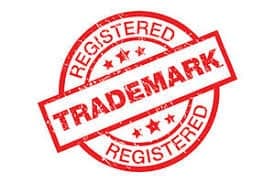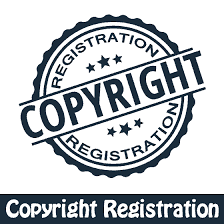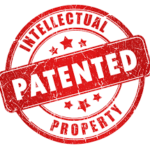Trademark Registration
Trademark is a brand or logo that you can use to make distinguish your products from your competitors. Make your logo or brand protected by trademark registration as by this registration you can protect your brand or logo by restricting other people from using the same. The Trademark registration will help in the expansion of your business, in image building, and protect your brand from copycats.

Services we offered
1. Trademark Application Filing
2. Reply to Examination Report or objection.
3. Correction of any clerical error or any other kind of error or mistake done in trademark application.
4. Attending hearing or represent at department.
5. Filing of counter reply for objection raised by the third party
Benefits of Trademark registration:-
- Protect your Brand Name
- Exclusive Right
- Creation of asset
- Recognition of Product’s quality
- Creation of goodwill and trust
Trademark Availability Check
Need Assistance of Experts?
Lets get started with Trademark name availability check.
Other Intellectual Property Registration
COPYRIGHT REGISTRATION
A copyright is a legal right given by the law to creators of literary, dramatic, musical, and artistic works and producers of cinematograph films and sound recordings. Copyright gives the owner of the work a certain safeguard to ensure the intellectual work is protected and creativity is rewarded. Copyright includes a bundle of rights like the rights of reproduction, communication to the public, adaptation, and translation of the work. Copyright registration serves as prima facie evidence in the court of law over ownership of the work. Therefore, copyright registration gives the owner legal protection for his/her work.

DESIGN REGISTRATION

If you want to register your design or protect it we are here to help you !!! Design is one of the categories of IPR where the design system focuses on the aesthetic feature of an article derived from its visual appearance. The registration and protection of industrial designs in India are administered by the Designs Act, 2000 and corresponding Designs Rules, 2001 which came into force on 11th May 2001 repealing the earlier Act of 1911. The Design Rules, 2001 was further amended by Designs (Amendment) Rules 2008 and Designs (Amendment) Rules 2014.
The design recognizes the creation of new and original features of new shape, configuration, surface pattern, ornamentations, and composition of lines or colours applied to articles which in the finished state appeal to and is judged solely by the eye.
Criteria of registration of Design:-
1) Design should be new or original
2) It should not be published in any country
3) Not contrary to public order or morality
4) Should not attract the provision of section 4 of Designs Act,2000
PATENT REGISTRATION

Protect your invention by patent registration with the help of us!!! The term patent refers to the right granted to anyone who invents something new, useful and non-obvious. A Patent is a statutory right for an invention granted for a limited period of time to the patentee by the Government, in exchange of full disclosure of his invention for excluding others, from making, using, selling, importing the patented product or process for producing that product for those purposes without his consent.
Benefits of Patent registration:-
1)A patent registration gives you the right to protect your invention from copying, manufacturing, selling, or importing without your permission.
2) You get protection for a pre-determined period, allowing you to keep competitors at bay.
3) You can license your patent for others to use it or you can sell it. This can provide an important source of revenue for your business
FAQ's
A trademark (popularly known as brand name) in layman’s language is a visual symbol which may be a word signature, name, device, label, numerals, or combination of colors used by one undertaking on goods or services or other articles of commerce to distinguish it from other similar goods or services originating from a different undertaking. The legal requirements to register a trademark under the Act are:
1)The selected mark should be capable of being represented graphically (that is in the paper form).
2) It should be capable of distinguishing the goods or services of one undertaking from those of others.
3) It should be used or proposed to be used the mark in relation to goods or services for the purpose of indicating or so as to indicate a connection in the course of trade between the goods or services and some person have the right to use the mark with or without the identity of that person.
The Registered Proprietor of a trademark can create establish and protect the goodwill of his products or services, he can stop other traders from unlawfully using his trademark, sue for damages, and secure destruction of infringing goods and or labels.
The Government earns revenue as a fee for registration and protection of registration of trademarks.
The Legal professionals render services to the entrepreneurs regarding selection registration and protection of trademarks and get remunerations for the same. The Purchaser and ultimately Consumers of goods and services get options to choose the best.
The registration of a trademark confers upon the owner the exclusive right to use the trademark in relation to the goods or services in respect of which the mark is registered and to indicate so by using the symbol (R) and seek the relief of infringement in appropriate courts in the country. The exclusive right is however subject to any conditions entered on the register such as limitation of area of use etc. Also, where two or more persons have registered identical or nearly similar marks due to special circumstances, such exclusive right does not operate against each other.
After the application is registered with the government, a TM number is assigned by the trademark department within 1-2 days of submission of the application. After this, you can use TM with your brand.
Copyright (or author’s right) is a legal term used to describe the rights that creators have over their literary and artistic works. Works covered by copyright range from books, music, paintings, sculpture, and films, to computer programs, databases, advertisements, maps, and technical drawings.
Exhaustive lists of works covered by copyright are usually not to be found in legislation. Nonetheless, broadly speaking, works commonly protected by copyright throughout the world include:
1) literary works such as novels, poems, plays, reference works, newspaper articles;
2) computer programs, databases;
3) films, musical compositions, and choreography;
4) artistic works such as paintings, drawings, photographs, and sculpture;
5) architecture; and
6) advertisements, maps, and technical drawings.
Copyright protection extends only to expressions and not to ideas, procedures, methods of operation, or mathematical concepts as such. Copyright may or may not be available for a number of objects such as titles, slogans, or logos, depending on whether they contain sufficient authorship.
Copyright protects original works of authorship, while a patent protects inventions or discoveries. Ideas and discoveries are not protected by copyright law, although the way in which they are expressed may be. A trademark protects words, phrases, symbols, or designs identifying the source of the goods or services of one party and distinguishing them from those of others.
‘Design’ means only the features of shape, configuration, pattern or ornament or composition of lines or color or a combination thereof applied to any article whether two dimensional or three dimensional or in both forms, by any industrial process or means, whether manual, mechanical or chemical, separate or combined, which in the finished article appeal to and are judged solely by the eye, but does not include any mode or principle of construction or anything which is in substance a mere mechanical device, and does not include any trademark, as defined in clause (v) of sub-section of Section 2 of the Trade and Merchandise Marks Act, 1958, property mark or artistic works as defined under Section 2(c) of the Copyright Act, 1957.
The object of the Designs Act is to protect new or original designs so created to be applied or applicable to particular article to be manufactured by Industrial Process or means. Sometimes the purchase of articles for use is influenced not only by their practical efficiency but also by their appearance. The important purpose of design Registration is to see that the artisan, creator, originator of a design having aesthetic look is not deprived of his bonafide reward by others
applying it to their goods.
The registration of a design confers upon the registered proprietor ‘Copyright’ in the design for the period of registration. ‘Copyright’ means the exclusive right to apply a design to the article belonging to the class in which it is registered.
A Patent is a statutory right for an invention granted for a limited period of time to the patentee by the Government, in exchange for full disclosure of his invention for excluding others, from making, using, selling, importing the patented product or process for producing that product for those purposes without his consent.
The term of every patent granted is 20 years from the date of filing of the application. However, for applications filed under the national phase under Patent Cooperation Treaty (PCT), the term of the patent will be 20 years from the international filing date accorded to PCT.
An invention is patentable subject matter if it meets the following criteria
1)It should be novel.
2) It should have inventive step or it must be non-obvious
3) It should be capable of Industrial application.
4) It should not attract the provisions of sections 3 and 4 of the Patents Act 1970.
No. Patent protection is a territorial right and therefore it is effective only within the territory of India. There is no concept of the global patent.
However, filing an application in India enables the applicant to file a corresponding application for the same invention in conventional countries or under PCT, within or before the expiry of twelve months from the filing date in India. Patents should be obtained in each country where the applicant requires protection of his invention.

